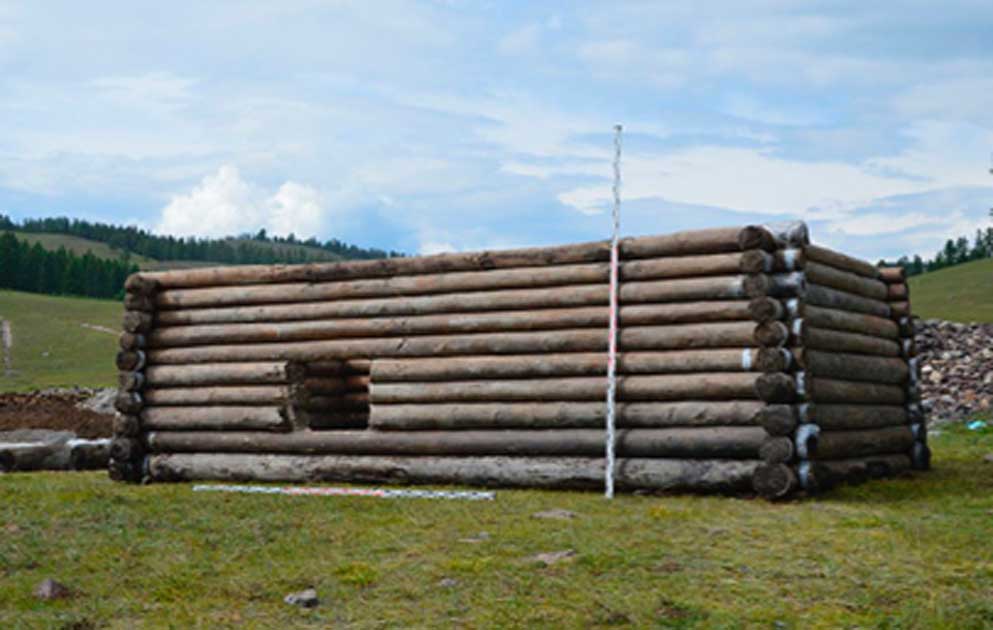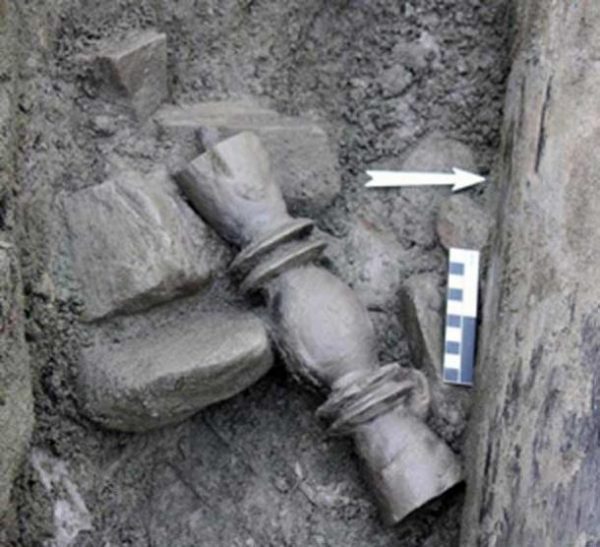Found in Permafrost: 2,300-Year-Old Cabin Rebuilt

When one thinks of a log cabin rustic America comes to mind but this log cabin was built in the Altai Mountains where Russia, Mongolia, China and Kazakhstan meet in Siberia. It was built over two thousand years ago and was preserved by the Siberian permafrost.
Built as an entrance to a burial chamber for a wealthy couple, most likely of ruling status, the log structure gives us a look at how the nomadic Pazyryk people from the fourth to third centuries B.C. built their dwellings.
The log house was disassembled by a team of archeologists led by Dr. Nikita Konstantinov from Gorno-Altaisk State University and was found to have been assembled by numbered notches much like Lincoln Logs.
The plan was so simple the team was able to easily reconstruct the cabin a few feet away from the burial location. The measurements were so precise there was only a difference in angles of 0.4 inches – well within the modern allowance of 2.8 inches, according to siberiantimes.com.
Initial excavations in 1949 by Soviet archeologists left the building standing in the permafrost but it was disassembled again in the summer of 2019 and taken to the National Museum of the Altai Republic in Gorno-Altaisk for drying and preservation.
2,300yo wooden house rebuilt & fits down to last cm. Timber from potentate’s log cabin was superbly persevered in permafrost, allowing us to see how ancient man lived – and amazingly builders of the past left IKEA-type instructions to allow re-construction https://t.co/1lqIa0AyAy pic.twitter.com/AvvxIFQrZZ
— The Siberian Times (@siberian_times) August 26, 2019
The 1949 excavations produced the mummies of a man and a woman mostly covered in intricate and highly ornate tattoos. Many of the mummies that have been found in the Siberian permafrost all share the same tattoo on the upper part of their right shoulder of a creature resembling a wild goat with an eagle’s beak and a panther’s tail.

The left shoulder usually sported a ram or a tiger. According to archaeology.org, archaeologist Sergey Yatsenko of the Russian State University for the Humanities believes they may have been spiritual and used for protection. The mummies were carefully moved to the Hermitage Museum in St Petersburg, Russia where they are being studied by archaeologists, radiologists and biological anthropologists, among others.
The male is believed to have died when he was in the age range of fifty five to sixty and the female about ten years younger. The hair that was still attached to the heads of both mummies showed curly, ginger hair on the man while the woman had dark brown hair.
The mummification process was not unusual with the brain and internal organs removed but an uncommon factor was that the muscles of the body were also removed. The skin was then stuffed with horsehair with the incisions sewn together also with horsehair.
While the burial site was robbed of most of its valuables many years ago, left behind were the mummies of nine horses wearing harnesses ready to be connected to a wooden chariot.
The remnants of the chariot were also found in the chamber along with a knotted wool carpet that may be the oldest ever found. The carpet is about seventy-two inches by almost seventy-nine inches and has been carbon dated to the same time of the mummies’ burial.
The carpet has images of lotus buds, griffins, deer and horsemen and probably had very vibrant colors which have since faded but the fact that it existed in the ice for over two thousand years is extraordinary. It is currently on display at the Winter Palace in the Hermitage Museum. Also found were pot shards, skins of goats and sheep and an incense burner with remnants of cannabis.
Much of the area of the Altai mountain range are under UNESCO protection for the over six hundred burial mounds found in the area. Other Pazyryk burial excavations have produced weapons, clothing, household tools and jewelry.
Musical instruments such as drums and harps called “diadagans” have been found as well. Whc.unesco.org tells us that in the Elangash valley over thirty thousand petroglyphs have been found depicting everyday life of the Pazyryks along with bulls and goats and scenes of hunting, migrations and mythical legends.
Another Article From Us: Huge Amazon Woman Warrior From 14th century Unearthed in Mongolia
There is still much work to be done in the Altai mountains especially with the permafrost disappearing at an alarming rate. Archeological work, DNA testing and radiocarbon dating are essential to identifying these Iron Age ancestors before exposure to warming temperatures makes finding such perfectly preserved artifacts impossible.
